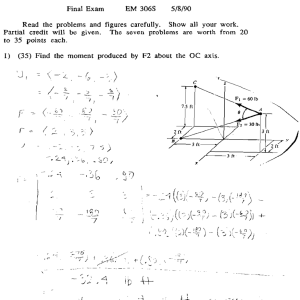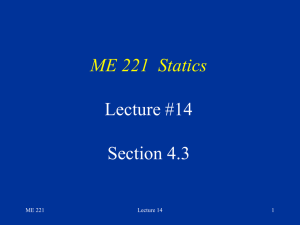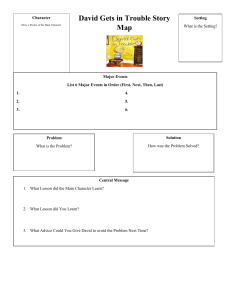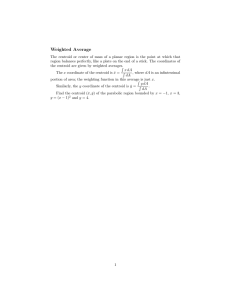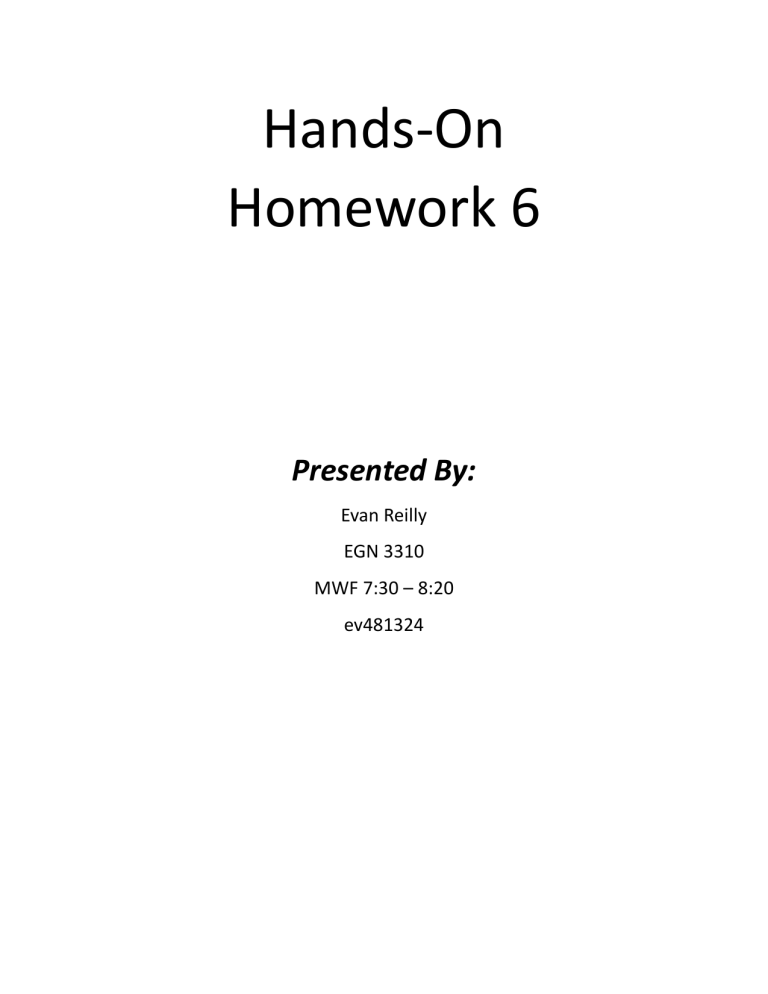
Hands-On Homework 6 Presented By: Evan Reilly EGN 3310 MWF 7:30 – 8:20 ev481324 Problem: We are required to calculate the centroid and calculate the moment of inertia of that centroid. We are then to compare and discuss the results. Method one: Analytically Method two: Physically Objective: The objective of this assignment is to solve the centroid by hand using centroid of areas as well as solving for the moment of inertia and then physically by creating a physical model of the centroid assigned. We are then to compare both answers. Solving Analytically: Solved by using Centroid of Areas: Description for Centroid of Areas: Solving the problem analytically we can start by deciding how we will cut up the composite figure assigned to us. We will then create a graph listing the necessary things needing to be solved to get our final answer. After the graph has been drawn out, we then will solve for the area, the x and y, and the AiXi and AiYi of each shape. Once we have solved and completed this we will find the sum of area and AiXi and AiYi which will then lead us to solving for the x̄ and ȳ. The x̄ is equal to 90.33 mm while the ȳ is equal to 59.424 mm. Solved using Moment of Inertia: Description for Moment of Inertia: Using the information solved previously we can use the equations given to us to solve for the moment of inertia of each shape. Solving for the larger rectangle we get Ix and Iy being 88,746,666.67 and 20,650,666.67. For the smaller rectangle we will get Ix and Iy being 46,506,666.67 and 33,706,666.67. Solving semi-circle 3 we will get Ix and Iy being 1,005,309.649. Solving for the circle we will get Ix and Iy being -125,663.706. The summation of both Ix and Iy is 136,132,979.3 mm^4 and 55,236,979.28 mm^4. Solving Graphically: Description: Solving the problem physically we had to start off by accurately measuring and cutting out the composite figure assigned. After the figure has been cut out, we will then hang up the figure to find its center of gravity. After that, we will draw both lines until they meet up at an exact point. From there you will measure the x and y which are equal to the x being 94 mm and the y being 59 mm. Percent Error: X Y Analytically 90.33 mm 59.424 mm Physically 94 mm 59 mm %Error 4.06 % .7 % Looking at the percentage error we can evaluate that solving analytically and graphically were both a success. The cause of both percent errors can be summed up to possible human error while measuring the physical model. Conclusion: Comparing the answers of both the analytical and physical parts of the hands-on homework we can see that both X’s and Y’s were very similar to each other. For X we have a 4.06% error and for Y we have a meager .7% error. The X’s percent error is less than 5% which can most likely be summed up to a measurement error during the physical portion of the assignment. However, it seems that both answers are correct and both parts of the assignment were successful.

